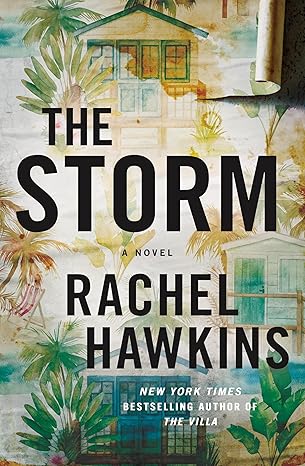3.5 Stars
This book relies on the trope of “a storm is coming” in both a literal and figurative sense.
St. Medard’s Bay, Alabama, is known for its hurricanes. After Hurricane Marie in 1984, 19-year-old Lo Bailey is charged with the murder of her married lover, Landon Fitzroy, the son of Alabama’s governor. His body was found near the Rosalie Inn, a century-old seaside hotel. Though Lo is not convicted, many suspect that Landon’s death was not caused by the hurricane and that she used it to cover up her actions.
In 2025, Geneva Corliss, the current owner of the Rosalie Inn, plays host to August Fletcher, a journalist co-writing Lo’s memoir. He arrives with Lo for an extended stay while they work on the book. As Geneva gets to know Lo and August, she develops theories about what happened in 1984, but it seems obvious that the truth is more complicated than she expects.
There are some issues with narrative structure. There are alternating timelines with alternating points of view, and this approach can be confusing. For instance, Chapter One begins with a section where Geneva narrates some events (June 21, 2025), followed by an excerpt from a tabloid newspaper (1985), pages of an unfinished manuscript (Sept. 3, 2025), an excerpt from a book published in 1988, and then an email (Oct. 4, 1983). It’s not always clear what one is reading or whose point of view is being presented until attribution is given at the end.
Pacing is uneven. At the beginning, not much happens. There’s a slow build up to the approaching hurricane which the reader knows will be accompanied by a confrontation of some type. In the latter part, there are a lot of twists which feel rushed. Unfortunately, many of the twists are predictable. One character has early-onset Alzheimer’s and this inevitably means that she possesses an important secret. Another character is vague about her past and this signals she has secrets as well. Sometimes characters react strangely to each other or avoid each other and these reactions almost always indicate a hidden connection. These are all not-very-subtle clues that regular readers of mystery and suspense will notice.
Men are not portrayed positively. Men are either abusive (Linus Bailey), incompetent (plumber), alcoholic (the handyman), or domineering (L. B. Fitzroy). Even Geneva’s father, a good guy, seems to have been rather gullible. There’s more than one man who has a hidden agenda. It is Landon who is most unbelievable. He’s nothing more than a smarmy playboy using his handsomeness and charm to manipulate much younger women.
The book is entertaining, especially if one is willing to ignore its shortcomings, but it is not exceptional in any way.
Note: I received an eARC from the publisher via NetGalley.






